If you’ve been following our recent blogs, you’ve probably seen quite a bit on how per- and polyfluoroalkyl substances (PFAS) are shaking up both the food and environmental industry. Even if you’ve not been following our blogs, you’ve probably seen a lot of media...
Tags

Celebrating customer experience: Insights from SCIEX leaders
Introduction Customer Experience Day (CX Day) is a special occasion for SCIEX, celebrated every first Tuesday in October. It’s a day dedicated to recognizing the incredible value of our customers and the relentless dedication of our associates who strive to make...

Detecting low levels of drugs and their metabolites in hair and nail samples using LC-MS/MS
You probably have heard of testing blood and urine samples for the presence of drugs and their metabolites. But do you know about the benefits of hair and nail analysis? In a recent webinar, Tina Binz, Deputy Head of the Center for Forensic Hair Analysis, University of Zurich, discussed the benefits of developing comprehensive and sensitive LC-MS/MS for the detection of low-level drugs and metabolites in keratinized matrices.

LC-MS system replacement: Are you ready?
Meeting deadlines in a bioanalysis laboratory can be a big challenge. Older, less sensitive and less reliable LC-MS systems make it even more difficult. Even the disruption caused by the installation and validation can be disconcerting and delay decisions. Does this sound familiar?
Questions and answers to help improve your mycotoxin analysis
During a recent webinar I shared method details for mycotoxin analysis on the SCIEX 7500 system. In this blog i will share the Q&A for the submitted questions that we did not have chance to answer during the live webinar.

Guide decisions during cell line development with more information at the intact level
Monitoring product quality attributes (PQAs) throughout monoclonal antibody (mAb) development is vital to ensuring drug safety and efficacy. By adopting orthogonal analytical techniques and integrating new technologies that have the potential to provide more information, it is possible to improve product quality and manufacturing efficiency and make more informed decisions.

Maximize NPS analysis with accurate mass spectrometry
LC-MS/MS is a powerful analytical tool in forensic toxicology testing that can support a variety of testing regimes such as screening, confirmation and quantitative workflows. More specifically, analysis of NPS using LC-MS/MS provides many advantages, including the ability to reliably detect new drugs and their metabolites from a variety of biological matrices.

Metabolite identification and peace of mind
Managing metabolite identification (Met ID) studies is challenging, so what is at the top of your priority list as you plan the year ahead? Ensuring you have the data needed to manage product safety, meeting deadlines, staff recruitment and training, maintaining compliance, capital expenses, or something else?

What has the Echo® MS system done for the pharma industry? (And don’t just take our word for it!)
SCIEX was very proud to have an illustration of the Acoustic Ejection Mass Spectrometry (AEMS) technology that powers the Echo® MS system on the front cover of the Journal of the American Society for Mass Spectrometry in January 2023. The associated article—Ultrahigh-Throughput Intact Protein Analysis with Acoustic Ejection Mass Spectrometry—was co-authored by scientists from SCIEX and Merck.
Methods for OPI electrode cleaning for Echo® MS system electrodes
Depending on the samples you are running on the system, it is possible for the Open Port Interface (OPI) electrode to become dirty or occluded over time. Below are two different cleaning strategies that can help you maintain your Echo® MS system and keep your OPI...

Rescheduling a Schedule I substance, and the Delta-8 controversy
Did you know that in the US, drugs and other chemicals are classified into 5 distinct categories depending on the drug’s acceptable medical use and its potential for abuse or dependency? Drugs federally classified as Schedule I substances by the US Drug Enforcement Administration (DEA) are considered to have the highest potential for abuse and for creating severe psychological and/or physical dependence. In addition to heroin, LSD and MDMA (ecstasy), cannabis is classified as a Schedule I substance in the Controlled Substance Act of 1970, which means it has no approved medical usage.

10 Minutes in One Shot. That’s How Quickly You Can Screen 664 Forensics Compounds
Drug testing is a moving target. As novel psychoactive substances (NPS) rapidly emerge as a new class of designer stimulants (DS), global use has reached an all-time high over the last decade. Supposedly ‘legal’ alternatives to internationally controlled drugs, these...
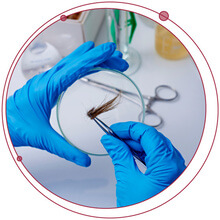
Turbocharge THC-COOH Hair Analysis with Super Sensitive LC-MS/MS and Solid Phase Extraction
Do you want a more efficient workflow for the forensic analysis of THC-COOH in hair samples? Yes! Do we know a simple, highly sensitive technique? You bet! Read on to find out how you can detect THC-COOH in hair down to 0.2 pg/mg trace concentration levels with...
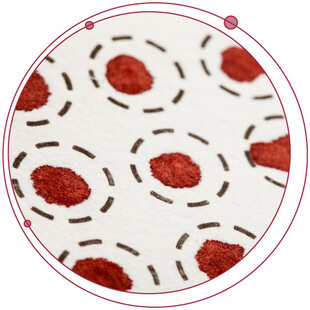
Fast Novel Psychoactive Substance Testing, At Your Fingertips
Why Dried Blood Spot Analysis Is the Way to Go for Novel Psychoactive Substances(And Why You Need This SCIEX LC-MS/MS Method) Anyone with children will remember that moment in the hospital when the nurse pricks the heel of your tiny new baby to squeeze out a few drops...

Take 5 with Dan Blake – 5 Minutes, 5 Questions on the World of Clinical Mass Spec
We would like to formally (or informally) introduce the new SCIEX Clinical Diagnostics blog series entitled, Take 5. Every couple of months we will ask a member of our team to answer five questions and share their responses in a format you can read in five minutes. We...
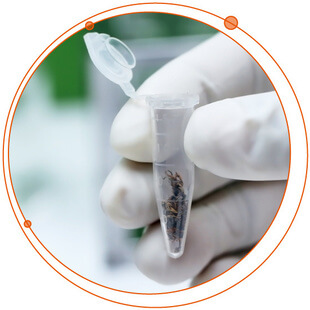
The Technology Behind Safe, Legal Cannabis
The Third in a Three-Part Series Part 1: Cannabis is Legal in Canada - How Did We Get Here? Part 2: Canada's Focus on Cannabis Quality and Safety Intensifies Welcome to the third in a series of blogs from the cannabis team at SCIEX, designed to bring you up to speed...

What is Multi Attribute Methodology (MAM)?
Q&A with Sean McCarthy Global Market Manager, Biologics, SCIEX MAM is an acronym for Multiple Attribute Method. In short, MAM is a method which may be applied for characterization of a biotherapeutic to understand its sequence, identify liabilities, identify...

New Methods for N-Glycan Sequencing Provide Structural Information in as Little as 1 Hour
As interest in N-glycan analysis grows within the biopharma industry, innovation continues allowing analyses to be done in less time with fewer and less tedious, sample preparation steps. One of these recent innovations was the release of the SCIEX Fast Glycan...

When Chiral Separation Turns Tricky: The Story Behind CESI-MS in Forensic Chiral Analysis
Against a backdrop of rapid growth, chirality plays a major role in the synthesis of drugs in both pharmaceutical and illicit drug development. In fact, more than half of the drugs currently in use are chiral compounds, available as either racemates or pure...
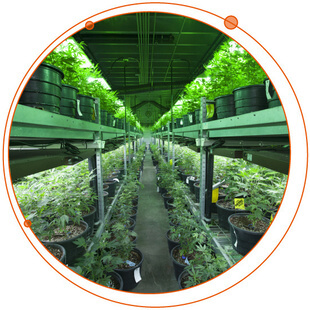
Cannabis is Legal in Canada – How Did We Get Here?
The First in a Three-Part Series Welcome to the first in a series of blogs from the cannabis team at SCIEX, designed to bring you up to speed and put you in the lead of the recently legalized cannabis market in Canada. The Canadian cannabis market has taken the plunge...
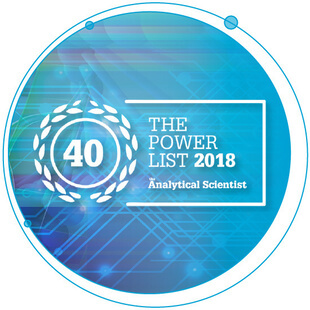
Pathway to Success: Young Metabolomics Researchers Named in The Analytical Scientist’s Power List
The direct correlation of the metabolome to the phenotype means metabolomics is one of the most sought-after approaches for the study of disease and wellness, yet the separation, detection, quantification, and unambiguous identification of a chemically diverse...
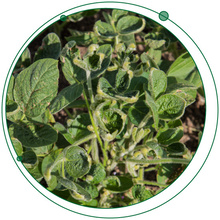
3 Dicamba Analysis Questions You Need to Ask Yourself Today
We blinked and the last two years went in a flash. It seems like just yesterday, the Dicamba herbicide controversy hit the headlines in 2016 and the EPA set the regulations to expire in two years. Fast forward to today. Dicamba is an acid herbicide used to kill...

Don’t Be a Food Scandal Scapegoat. Fight Back with LC-MS/MS for Your Meat Authenticity Testing
The infamous horsemeat scandal of 2013 shined a spotlight on the questionable integrity of our meat supply. What followed was a lengthy investigation as the extent of the scandal unraveled before our eyes, reaching far beyond the European borders...
It’s Time to Turn Things Around―Faster and Accurate Mass Analysis of Organic Explosives
Sadly, the world is a volatile place. The threat of organic explosive use by terrorists and criminals is very much with us, posing a significant danger to people worldwide. The rising concern for public safety is a top priority for national security organizations...
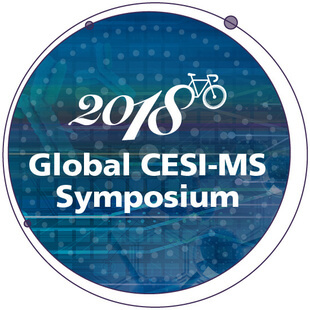
Push Your Research to the Cutting Edge: 2018 Global CESI-MS Symposium
There are a lot of conferences vying for your attention every year. The Global CESI-MS Symposium on October 10-11 in the Netherlands is one you can’t afford to miss. It is the place to hear about the latest advancements made through the adoption of CESI-MS...
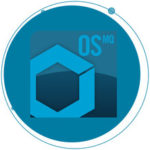
Break the routine: SCIEX OS-MQ improves your quantitation workflows
Advances in today’s technology have resulted in a need for higher and faster sample throughput, with increasing number of measured analytes per sample. The new SCIEX OS-MQ software breaks the routine and takes quantitation workflows to a new level. Key features...

Stop Fumbling Around in the Dark: Try LC-MS/MS for Designer Drugs in Forensic Samples
Imagine being blindfolded, sent into a large (dark) room filled with obstacles and challenged to find an item, but you don’t know what that item is, and you have never seen it before. Then you must do the same again the next day, but you are looking for a different...

Something’s in the Water: Tackle Your PFAS Analysis
Exposure to per- and polyfluoroalkyl substances (PFAS) residues could be dangerous. These chemicals have been linked to a variety of adverse health effects including liver damage, thyroid disease, decreased fertility, high cholesterol, obesity, hormone suppression,...

5 Reasons Why Mass Spec is Transforming Clinical Labs
According to the American Clinical Laboratory Association, more than 7 billion clinical lab tests are performed in the U.S. every year. While mass spectrometry represents only a fraction of the clinical applications, there are a growing number of tests where mass...
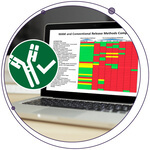
Save Effort. Save Time. Consolidate Your BioTherapeutic Quality, Safety, and Efficacy Assessments with One Direct LC-MS MAM Assay.
In a previous blog, we learned how you could Simplify Your Life with a Streamlined Workflow for Multiple Attribute Methodology (MAM). Based on the well-known technique of peptide mapping, a Liquid Chromatography-Mass Spectrometry-based MAM workflow (LC-MS MAM) enables...
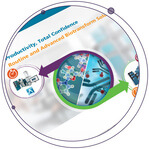
Metabolism and Biotransformation – What Are You Missing?
Are you looking to improve your MetID studies? Want to achieve the productivity and throughput you need to keep your projects moving and have complete confidence that you’re not missing any low level or parent-like metabolites in your sample? In this blog, we’re...